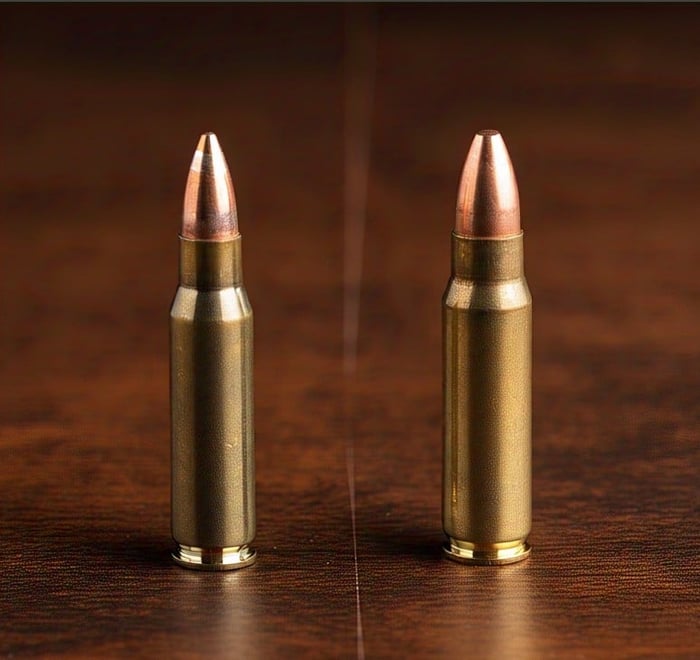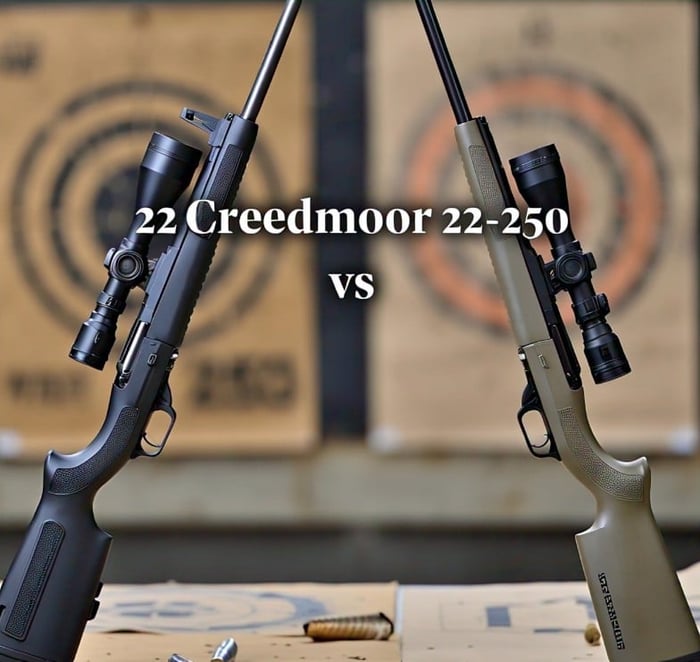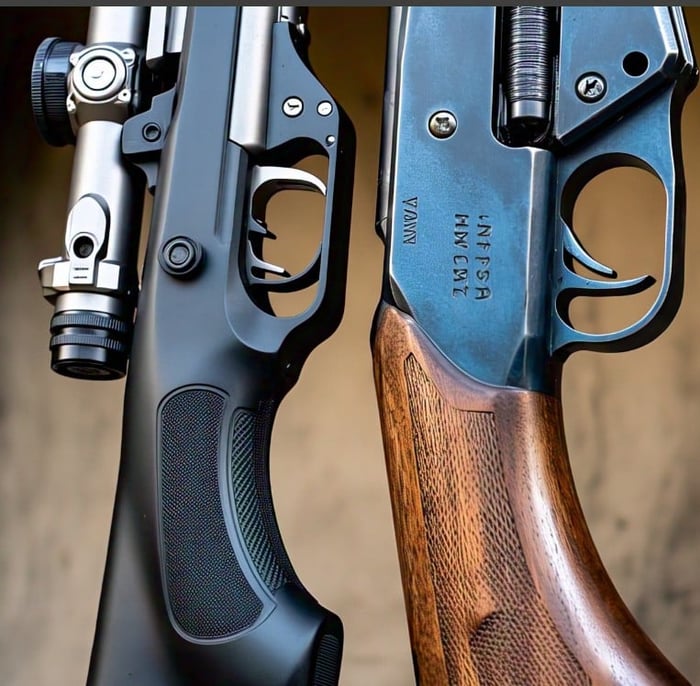In the matter of selecting the best cartridge for your rifle, the 6.5 Grendel vs 223 debate is one that generates a lot of interest among hunters, sport shooters, and gun enthusiasts. Both cartridges have their own strengths, weaknesses, and best use cases, so the choice is somewhat complicated. In this extensive article, we'll take a deep dive into the 6.5 Grendel vs 223 debate, looking at their history, ballistics, practical uses, and much more so that you can make a decision on which one is best for your purposes. Whether you're an experienced shooter or a new gun owner, this article will inspire to break it down in plain, human-friendly terms so that you can easily grasp it.
What is the 6.5 Grendel vs 223 Debate All About?
The 6.5 Grendel vs 223 debate usually arises since both these cartridges are widely used by AR-15 rifle owners, hunters, and for long-distance shooting. Though versatile and popular, they are used for different reasons owing to their design and ballistics. The 6.5 Grendel was made to provide improved long-range capabilities and stopping power, whereas the 223 Remington (even more commonly referred to as 5.56 NATO) is famous for light ammo, value for money, and general prevalence.
Let's take the fundamentals of each cartridge apart to prime the 6.5 Grendel vs 223 debate.
A Brief History of 6.5 Grendel
The 6.5 Grendel was brought out in 2003 by Bill Alexander of Alexander Arms. It was specifically designed for the AR-15 platform to fill the gap between the light 223 and heavier cartridges such as the.308 Winchester. The aim was to produce a round that would provide great long-range accuracy, good terminal ballistics for hunting, and reasonable recoil—all in a standard AR-15 magazine.
A Brief History of 223 Remington
Meanwhile, the 223 Remington has been in existence since the early 1960s. It was designed by Remington Arms and originally developed for the U.S. military as the 5.56x45mm NATO round. The 223 gained popularity among civilian shooters because of its low recoil, high velocity, and cost-effectiveness. It's commonly used for varmint hunting, target shooting, and even some self-defense purposes.
Ballistics Breakdown: 6.5 Grendel vs 223
To really know the 6.5 Grendel vs 223 controversy, we must examine their ballistics. Ballistics dictate how a bullet behaves in terms of velocity, energy, trajectory, and terminal performance. Let's compare the two cartridges in major areas.
Velocity and Energy
The 6.5 Grendel generally shoots heavier bullets (100-130 grains) at muzzle velocities of 2,500 to 2,600 fps from a 24-inch barrel. This creates greater muzzle energy, usually around 1,300-1,500 ft-lbs, and is better suited for larger game such as deer or hogs.
The 223 Remington, on the other hand, shoots lighter bullets (40-77 grains) at greater velocities, frequently above 3,000 fps from an equivalent barrel length. But its muzzle energy is less, usually around 1,200 ft-lbs for standard ammunition. This is why the 223 is more appropriate for small game such as coyotes or varmints.
Trajectory and Long-Range Performance
When putting 6.5 Grendel vs 223 long-range accuracy to the test, the 6.5 Grendel is the obvious winner. Its heavier bullets and greater ballistic coefficient (BC) allow it to retain velocity and energy more at long distances. The 6.5 Grendel possesses a flatter trajectory at beyond 300 yards and less wind drift, making it the go-to for precision shooters.
The 223, although precise at closer ranges (to 300 yards), begins to falter at longer ranges. Its lighter bullets are more prone to wind drift, and the trajectory plummets well past 400 yards. For most shooters, the 223 is ideal for short- to medium-range use.
Recoil Comparison
Another crucial point of comparison for 6.5 Grendel vs 223 is recoil. The 223 Remington has a light recoil and would be suited well for beginning shooters or anyone with a liking towards rapid second-shot recovery. The 6.5 Grendel is likewise but produces just a hair more recoil based on the larger-bullet and powder charge design. But generally speaking, the vast majority of shooters feel that recoil on the 6.5 Grendel is minor as opposed to its bigger counterpart of.308 caliber.
Practical Applications: 6.5 Grendel vs 223
Now that we’ve covered ballistics, let’s explore how the 6.5 Grendel vs 223 comparison plays out in real-world scenarios. Each cartridge excels in specific applications, so your choice will depend on your intended use.
Hunting with 6.5 Grendel vs 223
While hunting, the 6.5 Grendel is typically better suited for medium to large game. The heavier bullets and increased energy of the cartridge make it well-suited for deer, hogs, and even black bear at ranges of up to 400 yards. The deep penetration and consistent expansion of the 6.5 Grendel's rounds make it a go-to cartridge for ethical harvests.
The 223 Remington, on the other hand, is better suited for smaller game like varmints, coyotes, or prairie dogs. While it can be used for deer in some states with the right bullet selection (e.g., 62-grain soft points), it’s not ideal for larger game due to its lower energy and penetration. If you’re a varmint hunter, the 223’s affordability and availability make it a top pick.
Target Shooting and Competition
For target shooting, both cartridges are good in the 6.5 Grendel vs 223 issue. The 223 is a favorite in 3-gun matches and high-cap shooting because it's cheap, has little recoil, and enables quick follow-ups. It's also readily available, so you can buy plenty of ammo without overspending.
The 6.5 Grendel excels at long-range precision target shooting matches, like PRS (Precision Rifle Series). Its better ballistics at 500+ yards make it a top choice with shooters who must engage small targets at extended ranges. 6.5 Grendel ammunition is pricier and less available than 223, which is a disadvantage for high-volume shooting.
Home Defense Considerations
In the 6.5 Grendel vs 223 home defense debate, the 223 is usually the winner. Its lighter bullets are less likely to over-penetrate walls, cutting down the chances of collateral damage in a home setting. Also, the high velocity and fragmentation characteristics (with some loads such as hollow points) of the 223 make it a good choice for stopping threats.
The 6.5 Grendel can be employed for home defense, but its heavier bullets and greater energy make over-penetration more likely, which might be hazardous in close environments. For the majority of shooters, the 223 is the more practical and safer choice for self-defense.
Ammo Availability and Cost: 6.5 Grendel vs 223
One of the largest variables in the 6.5 Grendel vs 223 debate is ammo cost and availability. The 223 Remington is one of the most popular cartridges on the planet, with hundreds of manufacturers making a multitude of loads. You can buy 223 ammo at almost any gun shop or online store, usually for as little as $0.30-$0.50 per round for plain FMJ loads.
The 6.5 Grendel, although increasing in popularity, is not as prevalent. There are fewer manufacturers of 6.5 Grendel ammunition, and it is generally more pricey, $0.80 to $2.00 per round, depending on the load. As an economical shooter, the 223 is the more cost-effective option.
Reloading is also a factor. Both cartridges can be reloaded, but 223 components (brass, bullets, primers) are more accessible and less expensive. 6.5 Grendel brass is less available, and the heavier bullets contribute to the expense. Still, reloaders who spend money on 6.5 Grendel can get very good accuracy with custom loads.
Rifle and Magazine Compatibility
As both cartridges are aimed at the AR-15 platform, let's see how they compare in relation to rifle and magazine compatibility within the context of the 6.5 Grendel vs 223 debate.
Rifles
The 223 Remington is the norm for AR-15 rifles, and the majority of ARs are 5.56 NATO-chambered (which is 223-compatible). If you have an existing AR-15, you can fire 223 with no modifications.
In order to shoot 6.5 Grendel, you will need a barrel chambered for it, as well as a bolt that is compatible with it. If you are assembling an AR-15, you can purchase an upper receiver in 6.5 Grendel and simply install it onto your current lower. This allows for a seamless switch from 6.5 Grendel to 223 without the requirement of an entirely new rifle.
Magazines
The 223 uses normal AR-15 magazines, which are easily obtained and cheap. The 6.5 Grendel calls for specialized magazines made to handle its greater case diameter. 6.5 Grendel magazines are also good but are less plentiful and somewhat pricier than 223 magazines.
Advantages and Disadvantages: 6.5 Grendel vs 223
Summing up the 6.5 Grendel vs 223 analysis, let's analyze the advantages and disadvantages of both cartridges.
6.5 Grendel Advantages and Disadvantages
Advantages
Better long-range performance
Better suited for medium to large game hunting
More energy and penetration
Excellent precision shooting accuracy
Cons:
More expensive ammunition
Less common and less readily available
More recoil
Needs special barrels and magazines
223 Remington Pros and Cons
Pros:
Widely available and inexpensive ammunition
Low recoil for quick follow-up shots
Perfect for varmint hunting and home defense
Works with standard AR-15 rifles and magazines
Cons:
Limited long-range performance
Not as effective on larger game
More susceptible to wind drift
Which Do You Need: 6.5 Grendel or 223?
Picking between 6.5 Grendel vs 223 is really a matter of your personal needs and requirements. These are some suggestions based on typical applications:
If you're a hunter hunting medium to big game, use the 6.5 Grendel. It has a higher energy and performs superior at longer ranges, making it the gun to use for deer, hogs, or other large game.
If you’re a varmint hunter or budget-conscious shooter, the 223 Remington is the way to go. Its affordability and availability make it perfect for high-volume shooting or small game.
If you’re a long-range precision shooter, the 6.5 Grendel is your best bet. Its superior ballistics at extended ranges give it an edge in competitions or long-distance target shooting.
If you require a home defense cartridge, use the 223. Its less likelihood of over-penetration and performance in close-range situations make it the safer choice.
Conclusion: 6.5 Grendel vs 223 – A Versatile Choice
The 6.5 Grendel vs 223 debate doesn’t have a one-size-fits-all answer. Both cartridges are excellent in their own right, and the best choice depends on what you’re looking to achieve with your rifle. The 6.5 Grendel offers unmatched long-range performance and stopping power, while the 223 Remington excels in affordability, availability, and short-range applications.
By knowing the strengths and weaknesses of every cartridge, you can make a well-informed decision that suits your shooting objectives. Whether you're going to the range, into the woods, or getting ready for a competition, the 6.5 Grendel vs 223 comparison provides you with ample choices to consider.





